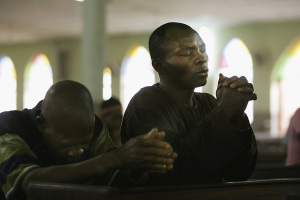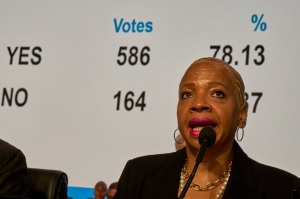Sexual Orientation as a Conditioned Response to Childhood Sexual Abuse: A Rarely Discussed Factor in the Scientific Literature

Two recent research papers have introduced me to a body of scientific literature that is highly pertinent to questions surrounding the development of non-heterosexuality. This research appears to offer confirmation and theoretical justification for what many therapists see clinically and what many people intuitively suspect, i.e., that childhood sexual abuse may play a formative role in the development of non-heterosexuality for many individuals.
The research: O'Keefe, Beard and colleagues (O'Keefe et al., 2014; Beard et al., 2013) procured retrospective data from 1,178 anonymous adult men who were students, faculty, and staff at two West Virginia universities as well as other men from the same area who had completed their educations. The sample was young (mean age of 21) and generally well-educated. Participants in the study anonymously responded via computer measures of depression, intimacy, sexual satisfaction, conflict between sexual partners, hyper-sexuality and risky sexual behavior, and same-sex and opposite-sex orientation. I will focus on the findings relevant to the origins of same-sex attractions and behaviors, but readers interested in the other findings are encouraged to consult the sources directly.
Results and Interpretation: These researchers focused on brother-brother incest (BBI) and sister-brother incest (SBI), but also assessed participants' experiences of child sexual abuse from an adult male (CSA-AM) and child sexual abuse from an adult female (CSA-AF). O'Keefe et al. (2014) provide a clear and helpful summary of the findings and their significance. I will quote the authors at length below to establish that I am not taking the researchers out of context and because I believe they state their case very well. However, I will omit the multitude of scholarly journal citations they provide to buttress their viewpoint.
The powerful effect of same-sex sibling incest as a predictor of adult same-sex orientation and of course same-sex CSA by adult males in our participants reported by Beard et al. (2013) and same-sex orientations in victims of sister-sister incest provide critical period learning, sexual imprinting, and conditioning explanations for three phenomena used in the past to support claims that there is a genetic basis or other biological basis for same-sex orientations: concordance of sexual orientations between twins, an increase in same-sex orientations among men with older brothers, and earlier puberty in gay men than in heterosexual men. Concordance of sexual orientations among identical twins is easily explained by the high likelihood of incest between the twins and the effect of same-sex incest on adult orientation. The higher incidence of same-sex orientations in men with older brothers is also easily explained by incest between the two brothers having a more profound effect on the younger brother because of critical period learning. As shown by results from the present study, the earlier onset of puberty in gay men is easily explained by a stronger early sex drive (driven by rising levels of testosterone) and by their sexual behaviors with the only sexual partners that young males have easy access to, other males.
Furthermore, the participants in our study who were victims of SBI and who also had early sexual experiences with males had a high interest in sex with both males and females as adults, a finding consistent with the idea that their early experiences produced coexisting same-sex and heterosexual preferences in women. Our findings definitely did not provide any evidence that could be interpreted as supporting a genetic basis for sexual orientation, because many victims of SBI subsequently engaged in early sexual experiences with male partners, and others became victims of SBI subsequent to or in the same year as early sexual experiences with male partners. Additionally, the adult sexual orientations of those participants who were victims of SBI and who also had early experiences with male partners reflected conditioning of both male-male and heterosexual orientations, a finding consistent with the idea that both co-existing orientations arose from conditioning occurring in the critical period and the idea that male-male and male-female sexual orientations are orthogonal. (pp. 28-29).
The researchers summarize their conclusions by stating:
"…to our knowledge, ours is the first study to provide evidence of counter-conditioning that occurred during the critical period for learning sexual preferences and more-or-less contemporaneously with same-sex conditioning trials. Based on data from the present stud[ies]…same-sex and heterosexual conditioning experiences during the critical period for learning sexual preferences appear to explain a major portion of the development of adult sexual orientations and also the immutability of those sexual preferences once adulthood has been reached. (p. 29)
Observations. As alluded to in the final sentence above, O'Keefe et al. (2014) downplay the potential implications of their findings and the conditioning paradigm for the potential of sexual orientation change in adolescents and adults. It would be of interest to know if this is what they genuinely believed or if they knew that making such statements would be the only way their research could survive the review process and be published. They appear to view such change as limited by the same developmental factors that can give rise to sexual orientation, concluding that, "…sexual imprinting working in concert with Pavlovian conditioning and operant conditioning is the mechanism that explains the powerful tendency of same-sex sibling incest or non-incestuous early experiences with same-sex partners to produce permanent adult same-sex or bisexual orientations in the victims" (p. 3).
Yet while this theory may help explain the relative endurance of sexual orientation across time for some individuals, the authors rely heavily on animal studies of sexual imprinting for their theoretical rationale. There is considerable debate about the limitations and validity of basing models of human sexuality on animal research (Barron & Brown, 2012). The role of human agency in sexual orientation change is likely undervalued in this theoretical approach, as is certainly suggested by the reports of both spontaneous and therapeutically assisted change that have been documented. The role of later conditioning experiences is also minimized, such as the pairing of gay pornography with masturbation in adolescence and early adulthood that some men report have altered their sexual arousal patterns. Thus, I believe that caution rather than pessimism about change in sexual attractions would have been a more reasonable conclusion for these researchers to have made.
Another feature of this research that I take some issue with is the authors' tendency to subsume all developmental pathways to sexual orientation into the conditioning model. Clearly they have made a strong scholarly case for the role of conditioning at key developmental stages in the development of sexual orientation (see also for example Bickham et al., 2007; Hoffmann, 2012; and Pfaus et al., 2012). However, this falls short of an all-encompassing explanation and the authors seem unaware of other potential developmental influences. Moreover, they appear to assume that same-sex and opposite-sex orientations are equally malleable and subject to conditioning and imprinting. They are silent on what they might view as a normative developmental pathway for the non-traumatized individual. However, both sexual complementarity and human experience suggests that, absent developmental obstacles, biological priming and gender identity developmental processes (e.g., identification with the same-sex parent) should favor the development of an opposite-sex orientation.
Given that this was a convenience sample (albeit a fairly large one) and analyzed through correlation, definitive causal statements or prevalence rates in the general population cannot be offered. Further research is clearly in order before the plausible theoretical pathway from childhood abuse to sexual orientation can be more firmly established. In spite of these limitations, O'Keefe et al (2014) and Beard et al. (2013) have made an important contribution to the literature in questioning the presumed dominant role of biological and genetic factors in the development of non-heterosexuality. The fact that this research goes unmentioned in public discussions on sexual orientation suggests that it supports an unwelcome narrative on the potential formative role of childhood sexual victimization in the development of non-heterosexuality. This is reason enough to believe these findings have important validating implications for clinicians who assist clients pursuing change in their unwanted same-sex attractions and behaviors.
References
Barron, A. B., & Brown, M. J. F. (2012, August 9). Let's talk about sex. Nature, 488, 151-152.
Beard, K. W., O'Keefe, S. L., Swindell, S., Stroebel, S. S., Griffee, K., Young, D. H., & Linz, T. D. (2013). Brother-brother incest: Data from an anonymous computerized survey. Sexual Addiction & Compulsivity, 20, 217-253. doi: 10.1080/10720162.2013.807483.
Bickham, P. J., O'Keefe, S. L., Baker, E., Berhie, G., Kommor, M. J., & Harper-Dorton, K. V. (2007). Correlates of early overt and covert sexual behaviors in heterosexual women. Archives of Sexual Behavior, 36, 724-740. doi: 10.1007/s10508-007-9220-1
Hoffmann, H. (2012). Considering the role of conditioning in sexual orientation. Archives of Sexual Behavior, 41, 63-71. doi: 10.1007/s10508.012.9915-9
Pfaus, J. G., Kippin, T. E., Coria-Avilla, G. A., Gelez, Helene, Afonso, V. M., Ismail, N., & Parada, M. (2012). Who, what, where, when (and maybe even why)? How the experience of sexual reward connects sexual desire, preference, and performance. Archives of Sexual Behavior, 41, 31-62. doi: 10.1007/s10508-912-9935-5
O'Keefe, S. L., Beard, K. W., Swindell, S., Stroebel, S. S., Griffee, K., & Young, D. H. (2014). Sister-brother incest: Data from anonymous computer assisted self interviews. Sexual Addiction & Compulsivity, 21, 1-38. doi: 10.1080/10720162.2013.877410




























